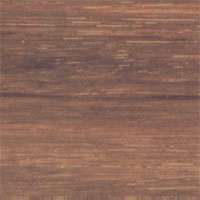
Abeum a grandes feuilles (Gilbertiodendron dewevrei)
Family: Leguminosae
Common names: Abeum a grandes feuilles, Abeum grdes feuilles, Bemba, Bembe, Ditshipi, Ekobem, Ekpagoi, Ekpagoi eze, Ekpagoieze, Epal, Eze, Ligudu, Ligundu, Limbali, Limbalu, Mbombi, Molapa, Sehmeh, Vaa, Wete, Zabrano, Zebra wood
Distributed in: Cameroon, Central African Republic, Congo, Gabon, Ivory Coast, Liberia, Nigeria, Sierra Leone, Zaire (Africa)
Common uses: Agricultural implements, Boat building (general), Boat building: decking, Boat building: framing, Bridge construction, Flooring, Flooring: industrial heavy traffic, Furniture, Heavy construction, Joinery (external): ground contact, Joinery, Light construction, Marine construction, Mine timbers, Paneling, Piling, Railroad ties, Tables, Toys, Turnery, Vehicle parts, Wheels
Tree size: Trunk diameter is 200-250 cm
Colors: the heart isReddish brown, Yellow to golden-yellow to orangeand the sapwoodWell defined, White to yellow.The grain isStraight, the textureMedium coarse to coarse
Natural durability: Susceptible to attack from termites (Isoptera), Very durable
Kiln Schedules: Kiln Drying Rate (in days) is rather slow
Kiln Drying Rate: Slow (18-28 days for boards < 32 mm, to 52-84 days for boards >= 63 mm)
Drying Defects: Moderate twist/warp, Severe surface checking
Ease of Drying: Slowly
Tree Identification: Bole/stem form is straight
Comments: General finishing qualities are rated as good
Blunting Effect: Blunting effect on machining is moderate
Boring: Very good to excellent results
Carving: Very Good to Excellent Results
Cutting Resistance: Easy to saw
Gluing: Fairly Easy to Very Easy
Mortising: Very Good to Excellent
Moulding: Very Good to Excellent
Movement in Service: Very Good to Excellent
Nailing: Holds nails well, Possible if prebored
Planing: Very Good to Excellent
Resistance to Impregnation: Sapwood is permeable
Resistance to Splitting: Poor
Response to hand tools: Responds Readily
Routing recessing: Very Good to Excellent Results
Sanding: Fairly Easy to Very Easy
Veneering qualities: Diifficult to veneer, Good gluing qualities
Screwing: Possible if prebored, Screwing yields good results; Turning: Very Good to Excellent Results
Painting: Satisfactory; Polishing: Good; Varnishing: Satisfactory;
- Numerical data Metric
- Numerical data English
- Strength properties
- References
 |
 |
 |
 |
| Item |
Green |
Dry |
Metric |
| Specific Gravity |
|
|
|
| Density |
|
817 |
kg/m3 |
| Bending Strength |
957 |
1440 |
kg/cm2 |
| Crushing Strength |
377 |
568 |
kg/cm2 |
| Hardness |
|
752 |
kg |
| Impact Strength |
|
|
cm |
| Shearing Strength |
|
124 |
kg/cm2 |
| Stiffness |
134 |
155 |
1000 kg/cm2 |
| Tangential Shrinkage |
|
|
% |
| Radial Shrinkage |
5 |
|
% |
| Weight |
801 |
641 |
kg/m3 |
| Maximum Load |
|
|
cm-kg/cm3 |
| Toughness |
|
|
cm-kg |
| Static Bending |
|
|
kg/cm2 |
|
 |  |  |  | | Item | Green | Dry | English | | Bending Strength | 13620 | 20489 | psi | | Density | | 51 | lbs/ft3 | | Hardness | | 1658 | lbs | | Maximum Crushing Strength | 5375 | 8092 | psi | | Shearing Strength | | 1775 | psi | | Stiffness | 1916 | 2209 | 1000 psi | | Weight | 50 | 40 | lbs/ft3 | | Radial Shrinkage | 5 | | % | | Tangential Shrinkage | 10 | | % | |
Bending strength (MOR) = high
Density (dry weight) = 46-52 lbs/cu. ft.
Shrinkage, Tangential = large
Max. crushing strength = high
Bending strength (MOR) = medium
Shearing strength (parallel to grain) = low
Modulus of Elasticity (stiffness) = medium
Modulus of Elasticity (stiffness) = high
Density (dry weight) = 53-60 lbs/cu. ft
Shrinkage, Radial = fairly large
Max. crushing strength = medium
Bending strength (MOR) = very high
Shrinkage, Radial = large
Shearing strength (parallel to grain) = medium
Hardness (side grain) = medium
Shrinkage, Tangential = fairly large
Shrinkage, Radial = moderate
Max. crushing strength = low
Density (dry weight) = 61-67 lbs/cu. ft
Altamirano, S.V.,1992,Maderas de Bolivia (Caracteristicas y usos de 55 maderas tropicals,Camara Nacional ForestalBanks, C.H. and J.P. Schoeman. 1963. Railway Sleeper and Crossing Timbers. Bulletin No. 41, Republic of South Africa. The Government Printer, Pretoria, South Africa.Banks, C.H., Schoeman, J.P., Otto, K.P.,1977,The Mechanical Properties of Timbers with particular reference to South,Africa,South African Forestry Research Institute Bulletin,(Ed.,Schoeman, J.P. 1973 & Otto K.P. 1976,No.48Bois et Forets des Tropiques,1992,Limbali - Gilbertiodendron dewevrei J.Leonard.,Bois et Forets des Tropiques Vol. 234Bois et Forets des Tropiques,1992,Nouvelles essences Commercialisables d'Afrique - Limbali (Gilbertiodendron,dewevrei,Bois et Forests Des Tropiques No.234 (4) 69Bolza, E., Keating, W.G.,1972,African Timbers - the Properties, Uses and Characteristics of 700 Species,C.S.I.R.O. Div. of Building ResearchErfurth, T., Rusche, H.,1976,The Marketing of Tropical Wood A. Wood Species from African Moist Forests,F.A.O. Forestry DepartmentFortin, Y., Poliquin, J.,1976,Natural Durability and Preservation of 100 Tropical African Woods,International Development Research Centre, CanadaFrance - C.T.F.T.,1977,Promotion of African Timbers - New Species,CTFT,35 LeafletsJay, B.A.,1968,Timbers of West Africa,TRADA, Red Booklet SeriesSallenave, P.,1955,Proprietes Phyiques et Mecaniques des Bois Tropicaux de l'Union Francaise,C.T.F.TScott, M.H.,1950,Notes on the more Important African Timbers Imported into the Union with,Special Ref. to Port. E.A. Species,Journal of the South African Forestry Association,No.19,pp18-62,[South,African Forestry Journal]Takahashi, A.,1978,Compilation of Data on the Mechanical Properties of Foreign Woods (Part,III) Africa,Shimane University, Japan, Research Report on Foreign Wood No. 7
|








